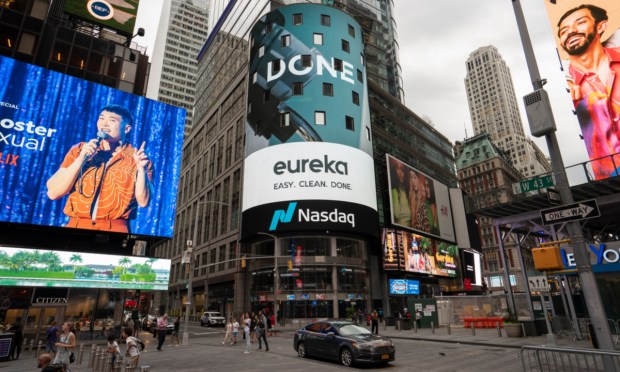As Snap and Meta Lose Momentum, Out-of-Home Advertising Gains Steam

In light of economic conditions, brands and retailers are seeking cost-cutting measures, leading to a surge in out-of-home (OOH) marketing mediums.
This shift is attributed to the realization that online channels such as Snap and Facebook appear to be less effective than desired.
After a five-year hiatus from OOH, direct-to-consumer (D2C) brand Bombas has made a foray back into the marketing channel, cautiously exploring new strategies to gauge their effectiveness.
In its latest campaign, which extends over five weeks, Bombas adopts a multichannel marketing strategy, with an emphasis on New York City. While employing an OOH approach, the campaign goes beyond apparel sales. It is a “mission-driven marketing campaign” aimed at generating awareness about homelessness through the presentation of thought-provoking facts on signs and other forms of media.
As an example, Bombas as created a sign that draws attention to the 20,000 homeless children in New York City, such as “1 in 6 homeless Americans is a child,” or “30% of Americans in homeless shelters are families with children.”
As part of their campaign, Bombas has created a dedicated microsite that showcases interviews with 15 individuals who have experienced homelessness.
One individual named Trixie tells Bombas, “It took a lot of humility to even go to a shelter.”
Interactive elements, such as the inclusion of QR codes which direct viewers to an informative microsite and videos, can be found. Additionally, the campaign leverages social media platforms such as TikTok and Instagram.
Why ‘Mission Driven’ and Why OOH
The move for Bombas is different, as when the brand originally use OOH, the brand primarily showcased their products through ads in subway stations.
But for this new campaign, Bombas told Modern Retail that is was important to meet their audience on their turf and with Bombas’s current journey stage, it was deemed an opportune moment to reexplore OOH and allocate additional resources to convey a message they genuinely care about.
And the campaign has had an impact, according to Co-Founder Randy Goldberg, with an increase in mentions and website traffic.
However, Goldberg emphasized that these metrics are not the primary focus of the campaign. The main objective is to ensure that people remember the information. If this prompts shoppers to view Bombas as a trusted resource in the long term, Goldberg views it as a successful outcome.
Prior to the pandemic, OOH advertisements saw popularity, but it has declined in recent years as more people shifted towards online shopping or opted to stay at home. However, there is now a resurgence in the OOH sector, with brands exploring new approaches to captivate the attention of audiences and convey diverse messages.
Brands Cut Ties With Snap and Meta
According to two agency heads, each representing about 50 small to medium-sized (SMBs) brands, there has been a reduction in ad spending on Snapchat from their clients.
Snap’s recent quarterly earnings report reflected the impact of these pullbacks. The company disclosed its first-ever decline in quarterly revenue, 7%, to $988.6 million for the first quarter of 2023, compared to $1 billion reported during the same period the previous year.
Experts attribute the decline partially to the strengthened ad products offered by Meta and Google; low return on ad spend (ROAS) and increasing cost per thousand impressions (CPMs) on Snap; and the saturation of national brands on the platform.
In April, following its initial decline in advertising sales, Meta shifted its approach towards advertisers, abandoning its previously assertive tone in favor of a more adaptable strategy to attract business. Contrary to their previous approach of demanding substantial increases in ad spending, Meta has adopted a more flexible stance, and now has expressed satisfaction with maintaining spending levels similar to the previous year.
To entice advertisers, Meta is offering incentives, including discounts of up to 25% for those willing to allocate a specific amount towards testing ad products on its TikTok competitor, Reels. And an advertising executive, whose company spends over $200 million annually with Meta, revealed that while Meta frequently provides discounts to promote new ad products, the magnitude of this particular discount is notable.
Additionally, in May, Meta introduced a feature called Promotional Ads, which the tech giant said will simplify the process for shoppers to benefit from seasonal sales, discounts on first-time purchases, and holiday promotions offered by various brands.
As part of the feature, when users encounter an advertisement showcasing a special promotion on Facebook, they can simply click on it to claim the offer. The discount code associated with the promotion will be automatically applied during the checkout process, eliminating the need for users to manually input the code.
In a demonstration, Meta displayed that when a user interacts with a sponsored post on Facebook, they are directed to a product listing where a discount label appears at the bottom right, indicating the offer, such as “claim 15% off.” This tool is being piloted and made available to select advertisers in the United States, United Kingdom, Canada and India.
What Was Old Is New
Revenue generated from OOH advertising witnessed an increase of 20.7% in 2022 as compared to the previous year, according to the Out of Home Advertising Association of America (OAAA).
The digital out-of-home (DOOH) segment had a 24.2% surge compared to 2021, according to OAAA. This marks the second consecutive year of DOOH experiencing growth surpassing 20%. The overall out-of-home (OOH) sector witnessed double-digit growth across all four categories: billboards, street furniture, transit and place-based.
